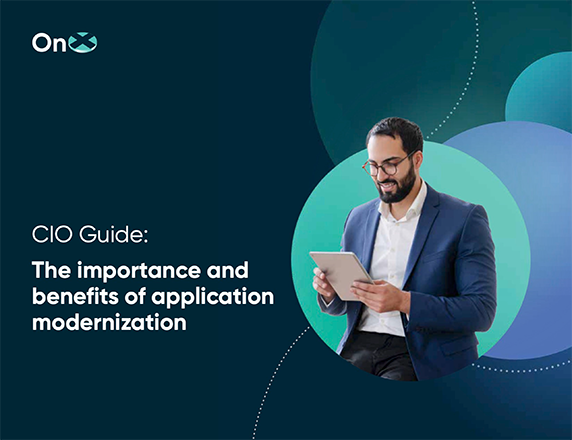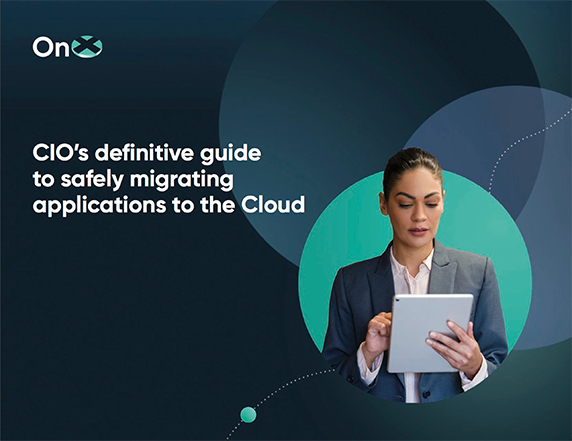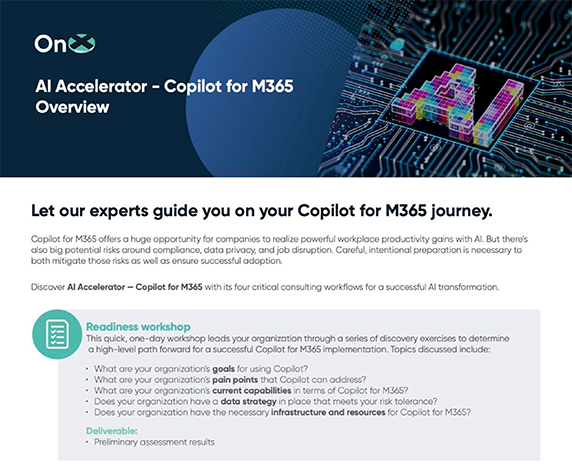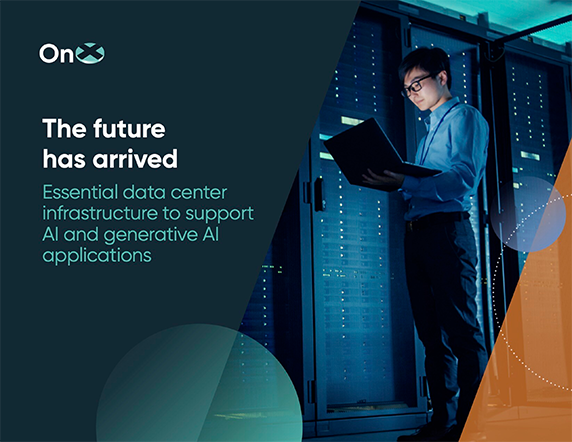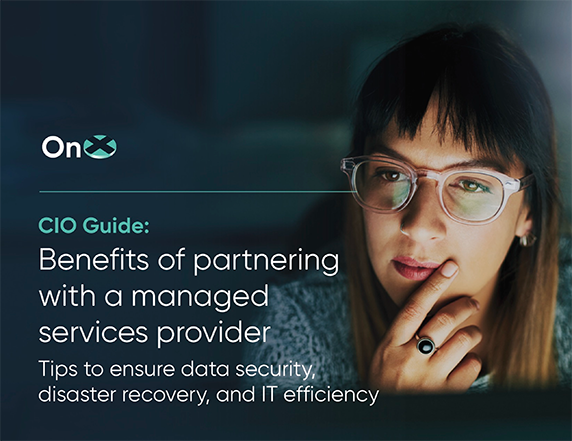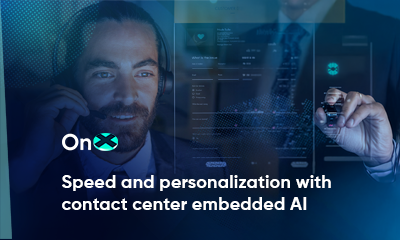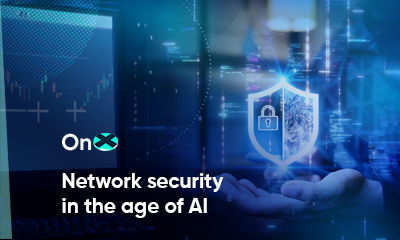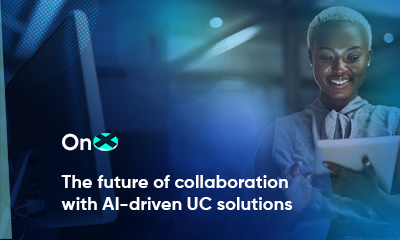
Businesses are navigating a new landscape of data privacy and security risks. As artificial intelligence (AI) has significantly altered the risk environment, AI in networking has also proven a strong solution for improving cybersecurity and strengthening privacy measures. As businesses continuously migrate to the Cloud, organizations are reconsidering their approach to data storage and, in turn, how they manage proprietary information.
A growing volume of business assets and sensitive user and customer information is spread across different storage locations. This data is located on virtual or shared frameworks and is accessed either via a consumption-based pricing structure or on the Internet. With the simultaneous arrival of generative AI (GenAI) and its popularity among businesses, the public, and cyber criminals, as well as new points of entry and weaknesses have come into play.
Coping with today’s AI-empowered cyber risks and the potential for losing proprietary information, businesses are considering the new solutions at their disposal. Safeguarding sensitive information requires a strong security base. AI solutions are supporting that foundation. Even when data privacy is well maintained with strong security tools, it can still be enhanced with AI-powered tools for data loss prevention (DLP) and data governance.
This blog will explore how AI in networking translates to stricter privacy measures and a more secure network, allowing businesses to build greater trust with their staff and customers.
Comparing security and privacy
When talking about data and technology, security and privacy are certainly linked, but they also mean two very different things.
- Data privacy is an informed understanding and governance over the use of sensitive data, as well as determining acceptable user behaviors and patterns.
- Security characterizes the safeguarding measures that protect systems and data from cyber threats, breaches, and bad actors who steal and ransom data.
The role of AI in networking security
AI both enhances bad actors’ threat potential while also strengthening an organization’s security position. Protecting user data from improper use means protecting that data from threat actors. AI security solutions result in faster response times and more flexible security measures than in the past. AI security tools monitor networks and traffic patterns to identify unusual user behavior.
Additional benefits of AI security platforms include automatic integration of the most current threat intelligence, with the information instantly applied to dynamically identify and respond to threats. AI platforms in networking can also assess network performance and suggest enhancements to improve security measures and operations. The outcome is a stronger security position, reducing the possibility of breaches and a stronger front line defense against privacy infringements.
These cybersecurity tools also serve as solutions for DLP and access control. AI-powered security capabilities also play a role in data governance, including:
- Vulnerability management and remediation.
- Secure browsers.
- Anomalies and threat detection.
- Mobile device management (MDM).
- Security policy development and enforcement processes.
Read more: AIOps in networking improves perimeterless security
AI-powered data governance
Other than protecting sensitive data from cyber criminals, AI in networking as a data governance solution can enforce a business’s established data governance policies regarding:
- Managing sensitive data.
- Maintaining established protocols.
- Preventing inadvertent data disclosures.
Investing in the governance policies that protect user privacy also exemplifies the value an organization places on users, building brand trust with staff and clients.
A variety of AI-powered data governance solutions are coming online as users become increasingly aware of data privacy and the threat environment continues to evolve. These are tools that prioritize vital, but time-consuming foundations that support data governance. They address the singular risks that can come with AI implementation. AI-first solutions, such as the comprehensive security catalog offered by Palo Alto Networks and Juniper’s secure AI-native edge, offer seamless integration with prevailing AIOps frameworks, meaning the approach to operations, privacy, and security is comprehensive.
But this is just the start of how data governance today can be strengthened with AI in networking.
Data exploration, classification, and tagging
As data storage becomes increasingly digital, bulk functions—including those pertaining to privacy—should have error-handling mechanisms to ensure that any possible failures are recognized and managed appropriately. These error handling mechanisms can be AI-enabled, reliably ensuring files are scanned, their contents examined, and data is categorized by level of sensitivity. By classifying and labeling data, privacy policies are better enforced. So, applying those policies becomes streamlined and automatic, reducing the possibility of oversights that could result in greater risk.
Inline policy enforcement
Business networks have had to adapt to remote and hybrid work environments. Traditional data governance policies are no longer limited by location, and MDM is ineffective when unmanaged devices are used.
AI can function as part of users’ day-to-day tools and still enhance the performance of tools such as secure browsers. Operational on both unmanaged and managed devices, Palo Alto Networks’ Prisma Access browser can mask data and control duplication and sharing functionality, such as printing capabilities and screenshots. Conversely, DLP for e-mail functions at the level of infrastructure to prevent data being shared through unsecured means.
Following training on corporate data governance policies, AI networking platforms can also provide access to personalized virtual assistants. These AI agents can identify violations of data governance policies or potential policy risks. They can also respond to natural-language queries regarding policy guidance or best practices.
Cohesive visibility
When data discovery is enabled with AI, businesses are aware of sensitive data locations and can track its movement longitudinally. To precisely evaluate weaknesses and liabilities, understanding the volume, location, and transmission of sensitive data is essential.
Unified visibility allows IT teams to evaluate risks and rapidly launch the remediation process. It additionally provides a more comprehensive overview of data privacy guidelines and governance rules throughout the business.
Implementing GenAI securely
The most prominent LLM today is ChatGPT. However, businesses are looking to privately create LLMs dedicated to specific sectors to increase their operational productivity and effectiveness.
Instantly, this represents two potential data loss scenarios:
- A public model is accidentally trained with data that was not adequately secured.
- Unauthorized access and use of a privately developed model trained with proprietary data by unapproved users.
While the AI evolution continues, additional threats will unavoidably occur. Privacy tools can perform internal resource assessments, scanning for sensitive data that may have been overlooked. Direct integration ensures AI networking platforms can mitigate potential risks and weaknesses while AI models are developing.
Read more: Integrating AI and cloud security: Emerging threats and strategies
Partner with OnX to capitalize on AI and streamline the user experience
AI in networking is undoubtedly changing how business systems function and how users interact with them. It is also changing technology overall. Cybersecurity, data management, and network frameworks are now dedicated focuses in IT, requiring professionals with technical training and experience.
The team at OnX has both the training and expertise. As a managed services provider, OnX has the cumulative experience necessary to efficiently deliver comprehensive business solutions at the enterprise level. Harness the abilities of OnX professionals to map out your AI journey and benefit from the confidence of best-in-class expertise and knowledgeable risk mitigation.
Get started on your business’s AI transformation by contacting OnX today.

